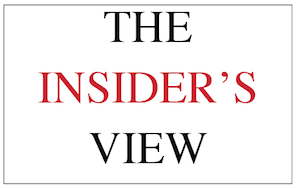ALL TOO OFTEN drinks brands seem to follow the crowd instead of making themselves stand out at the party and really engaging with their audience. Consumers want something back from a brand – stories that they can share and relate to.
Brands need to listen to the other stories being told and enjoyed and start telling their own story, making sure they are the centre of attention at their party and in this digital world it has never been easier to share our stories.
It starts with a story…
With the news that Twitter is outrunning Facebook and Google in terms of one of the most crucial areas for growth, drinks brands need to wake up to our social media-driven world.
The fundamental issue here that brands need to understand is that these days social media platforms are like supercharged global versions of a local community hall where people gather to chat, share experiences and interests. If brands want to get involved in these conversations then they have to realise it is not about one way messaging, rather it is about them helping and supporting the social media communities so it is beneficial to them, providing them with a reason to engage with the brand. It’s all about storytelling; think of it as The Glenlivet supplying the drink for the party at the community hall while holding a whisky tasting demonstration or discussing the myths and legends associated with whisky brands. So, how do brands reach their audience in a different way, without overselling?
Getting the party started – what do you bring?

|
Ameet Chandarana |
Brands need to be aware that they can’t simply just show up to the party with nothing to offer. Look at spirits and high end wines; what do they bring to the party? They bring snippets of knowledge and stories to accompany their product. It isn’t uncommon for whiskies to come with a myth or legend. Tomatin’s Cù Bòcan, meaning ghost dog in Gaelic, is named after the mythical creature that stalks around the distillery and represents Tomatin’s darker side as they use peated malt to make the whisky.
Or what about the non-conformist Bruichladdich, the self-proclaimed ‘roguish’ distillers who share the same attributes as their Gaelic forefathers? I think it’s their honesty that strikes a note with consumers; they describe themselves as a Cinderella, a ravishing natural beauty who was overlooked and unwanted – never given the chance to go to the ball. Who wouldn’t want to try this after reading such a refreshingly honest description of their product?
The Glenlivet is of course “The single malt that started it all” and being the biggest selling single malt whisky in the US and the second biggest selling single malt brand globally who can argue with that?
Whisky brands often bring mystery and legend whereas wine brands are about provenance. More contemporary brands are attempting to bring aspects of art and craft to their party – brands providing cocktails and mixology knowledge for their consumers, encouraging them to be experimental with their brands, for example suggesting that there are more uses for gin than just the simple G&T.
These brands engage with their consumers via storytelling and experimentation, not just piggy backing on what countless other brands are doing. The unique stories encourage consumers to talk about the brand and share the stories and knowledge online and offline with their friends.




